The Historiography of the Romanian Revolution: the Uses of Absurdity and the Triumph of Securitate Revisionism
Posted by romanianrevolutionofdecember1989 on December 31, 2013
(strictly personal viewpoint based on research and publications in academia from September 1990 to September 2000)
Not for nothing, as I like to say, did I include the phrase, “the Triumph of Securitate Revisionism” in my dissertation title (Richard Andrew Hall, Rewriting the Revolution: Authoritarian Regime-State Relations and the Triumph of Securitate Revisionism in Post-Ceausescu Romania (defended 16 December 1996, Department of Political Science, Indiana University, Bloomington IN, Ph.D. in Political Science awarded February 1997).
Although my 1999 article in East European Politics and Societies (Richard Andrew Hall, “The Uses of Absurdity: the Staged War Theory and the Romanian Revolution of December 1989,” East European Politics and Societies, September 1999, vol. 13, 3: pp. 501-542.) focused heavily on the “consumption” or “demand-side” of how Securitate revisionism came to be integrated, paralleled, and accepted in the Romanian media and body politic, I also discussed the content, role, and intentions of Securitate disinformation as disseminated by former Securitate personnel and collaborators in shaping the historiography of the Romanian Revolution of December 1989. Here is an excerpt:
…Securitate disinformation has perhaps been so effective precisely because it did not have to follow any detailed script: the goal was not to construct a single, coherent alternative to the initial understanding of events, but to destroy the initial understanding. In other words, the goal was to create confusion for the sake of confusion. This has had unintended, but nevertheless beneficial, consequences. First, it has spared former Securitate members from having to worry about the problem of contradiction. Second, it has appealed to their egos by encouraging individual former Securitate members to add their personal flourish to the evolving tall tale.
Disinformation in the Romanian case, I suspect, has been more anarchical and individually initiated, than planned and ordered from above. Nobody needed to tell former Securitate members what they should or should not say about the December events. They knew well that initial accounts had identified the Securitate as the terrorists. None of them could be sure how their colleagues might respond to an admission that the initial account was indeed correct. Moreover, as the dust began to settle after December 1989, it did not take long to realize that even if the Securitate no longer existed as an institution, many former colleagues considered the identity relevant and considered it the duty of former Securitate personnel to uphold the institution’s reputation in the historiography of the December events. Prudence counseled a conservative approach and that meant denying the initial understanding of the Securitate’s culpability. Indeed, Securitate disinformation may have been designed as much for internal consumption as to manipulate the public. The individual former Securitate officer who negated the existence of Securitate terrorists was in effect demonstrating his continued loyalty to his colleagues. Such manifestations of individual behavior collectively preserved the meaning and relevance of the Securitate’s identity beyond the institution’s official death.
Little did I think, of course, that two decades on, the direct influence of the former Securitate on the historiography of December 1989 should be so strong, so obvious, and yet go so-unchallenged in the Romanian media. What follows is the “harvest” from this year’s anniversary’s crop of articles on December 1989. I will present links to those articles first, briefly identifying the persons involved, and then post links to my research refuting their claims where appropriate (virtually all necessary features are covered in the first two deconstructions, as former Securitate revisionism is nothing if not repetitive…) and including a preview of some documents, photos, articles from that research.
1) Adevărul
2) Evenimentul Zilei
Când a început Procesul Revoluţiei, Ştef a ajuns martor al apărării. “Am încercat să povestesc despre “combinezoanele negre” , adică despre agenţii KGB care au făcut atmosferă la Revoluţie. Nu m-au lăsat. În seara de 16 decembrie, aproape de biserica lui Tokes, undeva între orele 19 şi 20, i-am văzut
prima dată pe agenţi. Erau opt, îmbrăcaţi în negru. Spărgeau vitrinele la Librăria Mihail Sadoveanu şi îi îndemnau şi pe puştanii de stradă să facă la fel. Mi-a sărit în faţă vocea lor: vorbeau româneşte, dar suna diferit. Aveau accent străin. Peste trei zile, am reîntâlnit combinezoanele negre pe podul de la Elba, când a fost incendiat un tractor. Erau 12. Instigau oamenii. Au introdus elemente de teroare în rândul oamenilor”, îşi aminteşte fostul ofiţer de contraspionaj economic.
EVZ.ro
Ion Mihai Pacepa, former head of Foreign Intelligence until his defection in 1978
background on the connections of Pacepa’s interviewer: http://blog.itmorar.ro/un-traseist-de-opinie-andrei-badin/
Pacepa’s interview was also broadcast by the B1 station and its details relayed by the daily Cotidianul
http://www.cotidianul.ro/pacepa-despre-executia-lui-ceausescu-229030/
3) Cotidianul
Aurel I. Rogojan, chief deputy to General Iulian Vlad, the Securitate Director in December 1989
Part 3 of a 5 part series: http://www.cotidianul.ro/evenimentele-din-decembrie-1989-intre-sperantele-unora-si-deziluziile-altora-iii-228956/
4) Curentul
General Maior Victor Nicolciou, head of the Securitate’s so-called anti-KGB and Warsaw Pact counterespionage
1) Grigore Cartianu
at minute 35, Troncota claims the “terrorists” were an “invention”:
at minute 51, there is a discussion that “Soviet tourists” were the “terrorists”:
Generalul Emil Macri (seful Dir. II-a Securitatii, Contrainformatii Economice),
Declaratie 2 ianuarie 1990:
“Rezumind sintetic informatiile obtinute ele nu au pus in evidenta nici lideri si nici amestecul vreunei puteri straine in producerea evenimentelor de la Timisoara. Raportarea acestor date la esalonul superior respectivi generalului I. Vlad a produs iritare si chiar suparare…”
Filip Teodorescu (adj. sef. Dir III Contraspionaj D.S.S.), Declaratie, 12 ianaurie 1990:
Seara [luni, 18 decembrie 1989], dupa 23:00, responsabili (anumiti ?) de generalul-maior Macri Emil pe diferitele linii de munca au inceput sa vina sa-i raporteze informatiile obtinute. Au fost destul de neconcludente si cu mare dificultate am redat o informare pe care generalul-maior Macri Emil a acceptat-o si am expediat-o prin telex in jurul orei 01:00 [marti, 19 decembrie 1989. In esenta se refera la:
–nu sint date ca ar exista instigatori sau conducatori anume veniti din strainatate…
The Last Report of the Securitate (DSS) to Nicoale Ceausescu
Please note: no mention whatsoever of the alleged role played by “Russian tourists” or “Soviet tourists” in allegedly fomenting the Timisoara uprising
published in Evenimentul Zilei, 28 iulie 1992, p. 3.
at minute 64, discussion that the “terrorists” were from the Army’s special DIA unit, a favorite, longstanding myth invented and spread by members of the former Securitate:


Expres Magazin, 9 ianuarie 1992

at minute 69, blaming Teodor Brates at TVR for intentionally creating panic about the “terrorists”:
Romania
On December 21, 1989, people drinking from water tank #4 in Sibiu experienced headache, visual disturbances, loss of consciousness, vomiting, etc. These symptoms are all compatible with organophosphate poisoning. The analysis of the water (by gas chromatography) and the determination of the cholinesterase activity of the blood was done in the University of Cluj. The conclusion was that an organophosphate had been used. Atropine sulfate and toxogonin were advised.
As soon as the symptoms appeared among the population, water tank #4 was shut off, rinsed, and cleaned. The people received water from army trucks.
A few days later, there was a fight in Timisoara between the army and Securitate over the water tanks. Poisoning was feared, as had occurred in Sibiu. According to witnesses, the Securitate possesses “all possible chemical warfare agents.”
Toxicologist Aubin Heyndrickx supervised the chemical tests and interviewed the physicians at Central Hospital who treated the patients. From the tests and from the very high dose of atropine required to produce a response, he concluded that the tank was poisoned with sarin or VX (Report on the Humanitarian Mission to Romania, December 23-29, 1989, Laboratoria voor Toxicologie Criminalistiek, State University of Ghent).
http://www.physiciansforcivildefense.org/cdp/jan90.htm
Indeed, one can watch a brief discussion of the incident with Dr. Heyndrickx beginning at approximately the 40 second mark from an ITN broadcast of 27 December 1989
ROMANIA: SIBIU AFTER THE REVOLUTION:
}T27128901 ROMANIA: SIBIU AFTER THE REVOLUTION: United Nations medical
27.12.89 relief team arrives in Sibiu with medical supplies and blood
TX to treat the people who were injured during the fight against
Securitate (secret police). Toxicologists have found evidence
that the security police poisoned the water supply. Injured
Securitate are being treated in hospitals alongside the people
they shot.
 Clip Ref: BSP271289002 0
Clip Ref: BSP271289002 0Clip 1of1
}T27128901 ROMANIA: SIBIU AFTER THE REVOLUTION: United Nations medical 27.12.89 relief team arrives in Sibiu with medical supplies and blood TX to treat the ...
- Duration: 00:01:44 |
- Timecode – In: 00:00:00:00 Out: 00:01:44:00 |
- Copyright: ITN / 3rd Party Copyright
Corneliu Vaida has been kind enough to share with me, the following additional confirmation of his actions in the document below:
For more about Corneliu Vaida during the Revolution in Timisoara in December 1989, see his interview with ITN correspondent Penny Marshall on 27 December 1989:
Corneliu Vaida Timisoara December 1989
In early March 1990, AFP reported the declared findings of surgeons in Bucharest, attesting to the fact that many of those wounded on 21-22 December 1989 in Bucharest had been shot with exploding bullets, DUM-DUM bullets. This is a critical article (and description of an event that I believe has gotten almost no coverage inside or outside Romania). Lt. Gnl. Traian Oancea, chief of surgery in part of the Central Military Hospital in Bucharest, and Dr. Nicolae “Nae” Constantinescu, chief of surgery at the Coltea Hospital, discussed this at a meeting of the Society of Surgeons in Bucharest.
This was also discussed by Bucharest medical personnel at a 1994 conference:
AMFITEATRUL FACULTATII DE MEDICINA
“Decembrie 1989, in spitalele din Bucuresti”
Mihail Lechkun, Romania Libera, 10 februarie 1994, p. 2
“In decembrie 1989 a fost o disponsibilitate pentru bestialitate, pe care nu am crezut-o capabila la poporul care fac parte, ” a declarat dl. conf. dr. Nicolae Constantinescu (Spitalul Coltea), in cadrul conferintei care s-a desfasurat marti seara in Amfiteatrul Mare al Facultatii de Medicina din Bucurest, avand ca subiect “Decembrie 1989, in spitalele din Bucuresti”. Printre invitatii Ligii Studentilor in Medicina, organizatorul acestei conferinte, s-au numarat: dl. prof. dr. Petre Andronescu, prorector, dl. dr. Constantin Antofie, dl. prof. dr. Marian Ciurel, dl. prof. conf. dr. Dan Niculescu, dl. conf. dr. Nicolae Constantinescu, dl. prof. conf. dr. Ilie Pavelescu, dl. dr. Eduard Geambasu, toti medici chirurgi din Capitala care au fost confruntate cu fluxul de raniti din decembrie 1989. “Documentatia pe care am avut-o, nu o mai avem,” a spus dl. prof. dr. Marian Ciurel (Spitalul de Urgenta) amintind totusi faptul ca au fost inregistrate date intr-o lucrare de doctorat. “Putini dintre cei raniti au fost socati psihic,” isi aminteste prof. dr. Petre Andronescu (Spitalul Colentina). Revolutionari si raniti au primit acelasi tratament, “stim doar ca la o parte din bolnavi s-au schimbat catusi” isi aminteste dl. prof. dr. Marian Ciurel. Peste 60 la suta din ranitii adusi la Spitalul Coltea erau impuscati lateral sau din spate. S-a tras si asupra oamenilor care au stat ghemuiti, acestia suferind astfel leziuni complexe. Pe langa datele statistice prezentate, medicii prezenti au atras atentia asupra naturii leziunilor care, in numar mare, au fost cazate de munitie al carie efect a fost mai mult distrugerea, mutilarea decat scoaterea din lupta. In acest sens, deosebit de interesante au fost datele prezentate din lucrarea de diploma, a medicului M. Briciu: “S-a tras cu gloante explozive”. Concluziile ce se pot trage din faptul ca cei adusi in spitale, in intervale de timp distincte, prezentau leziuni corespunzatoare anumitor portiuni din corp, demonstreaza existenta unor ordine asupra locului unde trebuia ochit. “Cred ca Romania va fi capabila sa constituie acel ecran care sa protejeze de acum inainte natia de asemenea manifestari,” a spus dl. conf. dr. Nicolae Constantinescu, remarcand aspectul benefic al unor astfel de conferinte.
NOR WERE THESE THE ONLY DOCTORS AND MEDICAL PERSONNEL–FOREIGN OR DOMESTIC–WHO ATTESTED TO THE USE OF DUM-DUM EXPLODING AND OTHER ATYPICAL, UNUSUAL MUNITIONS USED DURING THE EVENTS OF DECEMBER 1989
Dr. Manuel Burzaco from “Doctors without Borders” was part of a team of doctors from that group who visited hospitals in Bucharest, Ploiesti, Brasov, Buzau and Braila in late December 1989 and early January 1990. This report from the Madrid daily El Pais touches upon the women and children gravely injured by the exploding “dum dum bullets used by the Securitate.”
Other reports from Bucharest and Timisoara hospitals during the events:
“At Bucharest’s main emergency hospital, doctors said that Securitate snipers, apparently using infra-red telescopic sights and exploding dum-dum bullets, had been firing throughout Saturday night and they shot many civilians, with bullets striking foreheads and hearts. The morgue at the hospital was stacked with 90 bodies at noon today, almost all of them civilians dead of gunshot wounds.”
Blaine Harden, “In Bucharest, Tears and Prayers for the Fallen,” The Washington Post, 25 December 1989, p. A1; A40.
Procesul de la Timisoara (II). Audierea partii civile Popovici Ion: “…Atata retin foarte bine minte, ca ofiterul a spus, cica: ‘Nu, voi trageti cu dum-dum-uri si dupa aia Armata raspunde.’”
Popovici: “Mi-am revenit intr-un camion militar in care eram multi civili unii morti fiind adusi la garnizoana militara. La garnizoana eu am fost dat jos si predat unui cpt (capitan) sau unui lt.major (locotenent major). vazand rana mea n-a vrut sa ma primeasca exprimand: Voi trageti cu dum dum si noi sa raspundem pentru acest lucru.” (my thanks to A.K. for this transcription)
Popovici: “I came to in a military truck in which there were lots of civilians some dead being brought to the military garrison. At the garrison I was taken down and surrendered to a captain or lt. major, who looking at my wound did not want to receive me, exclaiming: You shoot with dum-dum bullets and we are held responsible for it.”
available on this site http://www.banaterra.eu/romana/procesul-de-la-timisoara-1990-1991-vol-v ]. The following is from Volume V.]
Some excerpts: P.C.: Ati dat o declaratie? Po. I. : Da P.C.: O mentineti? Po. I. Da (p. 827) P.C.: “Inteleg sa fiu audiat in cauza ca parte civila”, da? V-as ruga sa faceti putin liniste! “Mentin declaratia de la Procuratura si…” (p. 833)
Po. I.: …Da [am fost ranit]. Si dupa aceea a venit unul dintre trei [civili mai in varsta] dupa mine, m-a tarat pana la masina si la masina, acolo, am luat o bataie…ca n-am putut doua saptamani nici sa mananc nimica. M-a lovit cu patul de arma in falca si cu bocancii in cap. Si m-au dus, m-au dus la Garnizoana. La Garnizoana m-au aruncat din masina si a venit ofiterul de serviciu. Au venit si acestia trei a spus lu’ ofiterul de serviciu, cica: “Luati-l si duceti-l la arest.” Atata retin foarte bine minte, ca ofiterul a spus, cica: “Nu, voi trageti cu dum-dum-uri si dupa aia Armata raspunde. Voi omorati oameni si raspunde Armata dupa aceea.” Asta tin minte precis. Si de acolo mi-am dat seama ca nu poate sa fie soldati aceia. (p. 830)
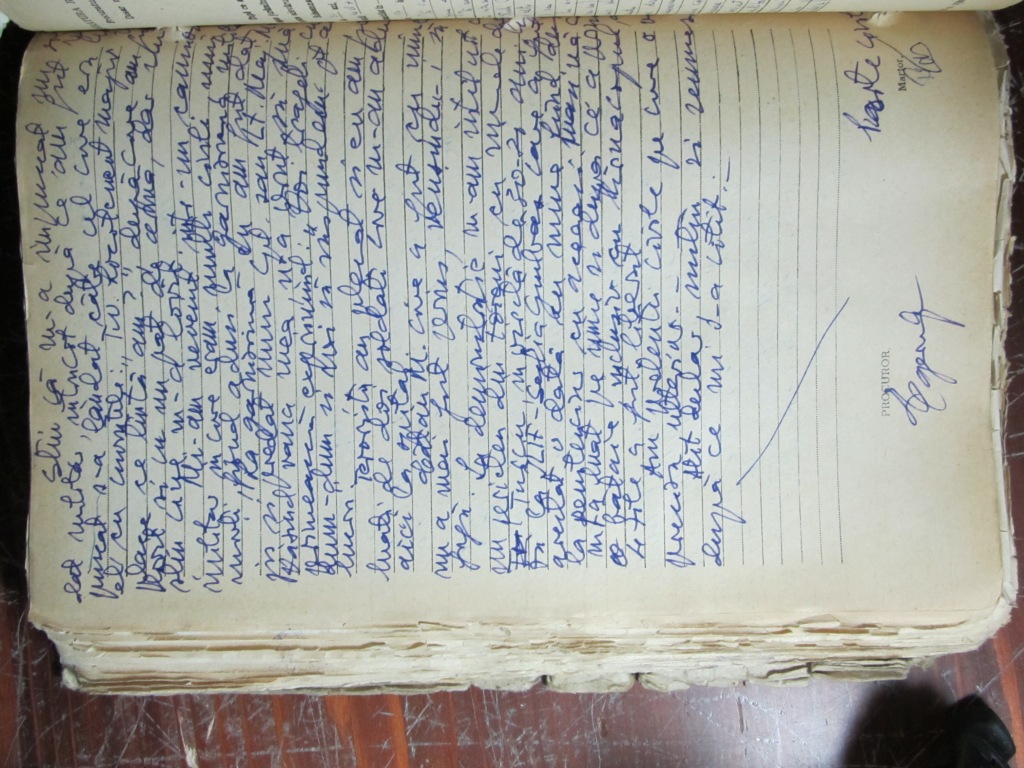

Mircea Stoica (declaratie, 8 ian 1990): “Cind am ajuns aici, la poarta o voce de militar din garnizoana s-a exprimat: “Ce faceti mai — voi toti cu BUM-BUM sau DUM-DUM si ni-i trimiteti noua sa ne spalam pe cap cu ei.”
Mircea Stoica (declaration, 8 January 1990): “When I got there, I heard a soldier’s voice from the garrison exclaim: “What are you guys doing? You all with your BUM-BUM or DUM-DUM and then you send`em to us to solve the problem [almost impossible to solve]” <very angry, pissed off>
(my sincere thanks to Gigga Adrian Tudor for this transcription and translation of the quote!)
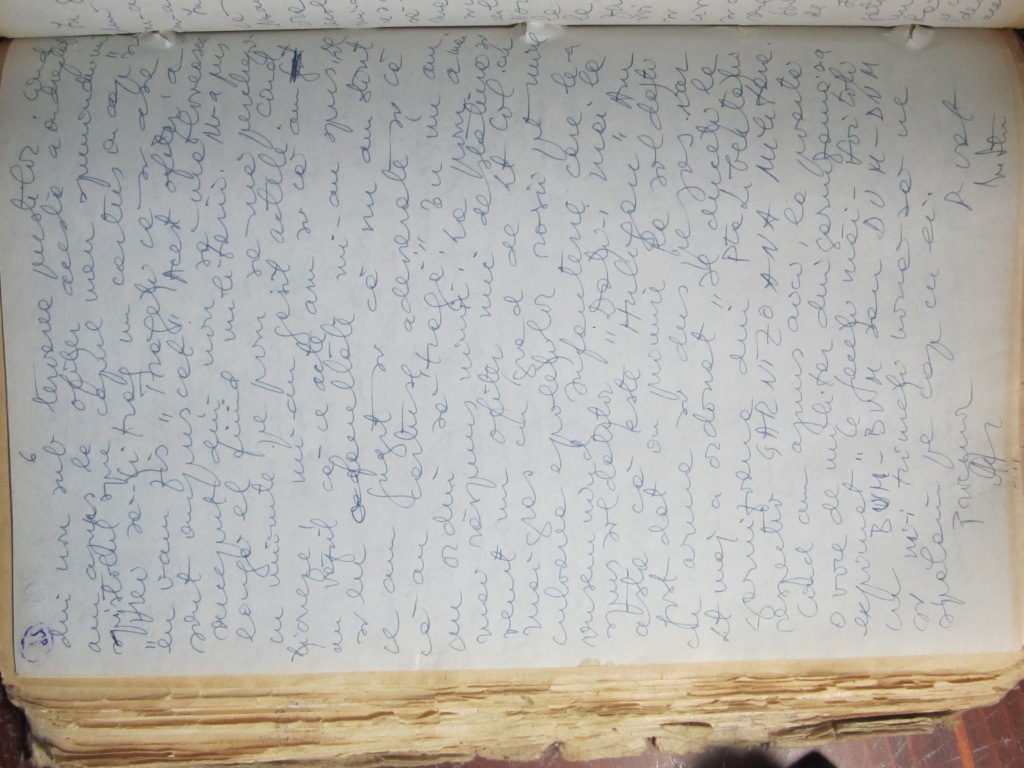
“Cind am ajuns aici, la poarta o voce de militar din garnizoana s-a exprimat: “Ce faceti mai — voi toti cu BUM-BUM sau DUM-DUM si ni-i trimiteti noua sa ne spalam pe cap cu ei.”
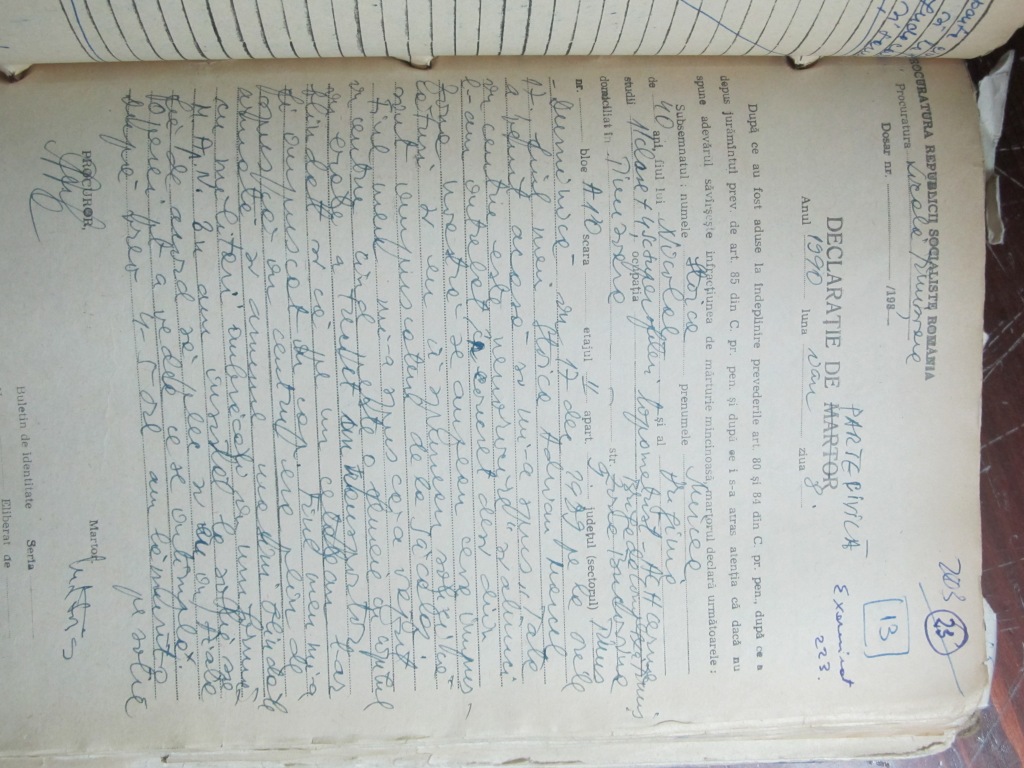
at minute 89, claimed “inventions” about the secret tunnels underneath the Central Committee building and elsewhere
I know of no better metaphor for what has happened to research on the Romanian Revolution of December 1989 than Ted Koppel’s surreal experience in Bucharest in early 1990 recounted below.
from 2 April 1990, ABC News Special. The Koppel Report: Death of a Dictator.
Monday, March 5 (1990).
Bucharest. Among the many art forms that have atrophied during the past 45 years in Romania, is that of dissembling. Confronted by questions they don’t like, a number of military officers and officials whom we encountered, simply lied. Stupid lies; the kind that speak of a society in which no one ever dared to question an official pronouncement.
We had requested a tour of the complex of tunnels that radiate out from beneath the old Communist Party Central Committee building in Bucharest. An army colonel escorted us along perhaps 50 yards of tunnel one level beneath the ground and the pronounced the tour over. I asked to be shown the second and third levels, videotape of which had already been provided us by some local entrepreneurs. “There is no second or third level,” said the colonel. I assured him that I had videotape of one of his own subordinates, who had escorted us on this tour, lifting a toilet that concealed the entrance to a ladder down to the next level of tunnels. The colonel went off to consult with his man. When he came back he said, “my officer says he’s never seen you before.” “True,” I replied, but then I’d never said he had, only that we were in possession of the videotape I’d described. “There are no other tunnels,” said the colonel.
Ted Koppel, “Romanian Notebook. The week Lenin got the hook.” The Washington Post, 13 March 1990, A25.
Dupa alti 20 de metri militarii au observat ca peretii tunelului au alta culoare, sunt mai noi si sunt acoperiti cu un fel de rasina sintetica. Dupa inca 10 metri culoarul se infunda. Chiar la capat se afla un piedestal din lemn pe care era asezat un capac de WC. Au ridicat capacul iar sub el au gasit un chepeng de fier. L-au ridicat si au gasit… un rau cu apa curata, care curge intr-o matca artificiala din beton. Are latimea de circa 1,5 metri si adancimea de aproximativ un metru. Raul se afla la aproximativ 12 metri sub platforma Pietei Revolutiei . Cele 16 barci erau folosite de fapt pentru acesta cale de navigatie.
from 2 April 1990, ABC News Special. The Koppel Report: Death of a Dictator.
2) Evenimentul Zilei
See among others:
I will leave the rest to some of the commenters to former Securitate officer Marian Stef’s claims on the Evenimentul Zilei site:
Nu stiu ce fel de “ofiter de Securitate ai fost (probabil,o lichea ca toti ceilalti!) si cum dracu ai ajuns SRI-st (alt gen de lichea!),dar imi aduc aminte cum toate lichelele din militie si securitate,spuneau in decembrie 1989 si 1990 ca ei sunt ‘militari”.niste NENOROCITI care au ajuns dupa aia sa spuna ca MILITARII sunt vinovati pentru asasinatele de la revolutie.Voi,cei din militie,securitate,DGIa sunteti calaii si principalii vinovati pentru acele crime!voi sunteti cei in “combinezoane negre” care ati ASASINAT nevinovati!”Combinezonul” era semnul distinctiv si de recunoastere intre voi,criminalilor! ….Iti spune toate astea,un militar adevarat (nu de la militie,Securitate sau din structurile informative si represive!)!
Securitatea romana avea o anumita calitate care o punea mai presus decat multe servicii mari de informatii din lume. Acest lucru a fost confirmat de aceste mari servicii de securitate care au recunoscut ca la acest capitol Secu era mult mai tare ca ei. Si anume la: DEZINFORMARE
Dezinformare a fost inainte de ’89, a fost imediat dupa ’89, si este si acum poate mai tare ca oricand.
This entry was posted on December 31, 2013 at 8:44 pm and is filed under decembrie 1989, raport final. Tagged: Ceausescu December 1989, East European Politics and Societies, History of the Romanian Revolution, nicolae ceausescu december 1989, Rewriting the Revolution: Authoritarian Regime-State Relations and the Triumph of Securitate Revisionism in Post-Ceausescu Romania, romanian revolution of december 1989, Securitate disinformation, Securitate revisionism, The Uses of Absurdity: the Staged War Theory and the Romanian Revolution of December 1989. You can follow any responses to this entry through the RSS 2.0 feed. You can leave a response, or trackback from your own site.
Leave a Reply
This site uses Akismet to reduce spam. Learn how your comment data is processed.



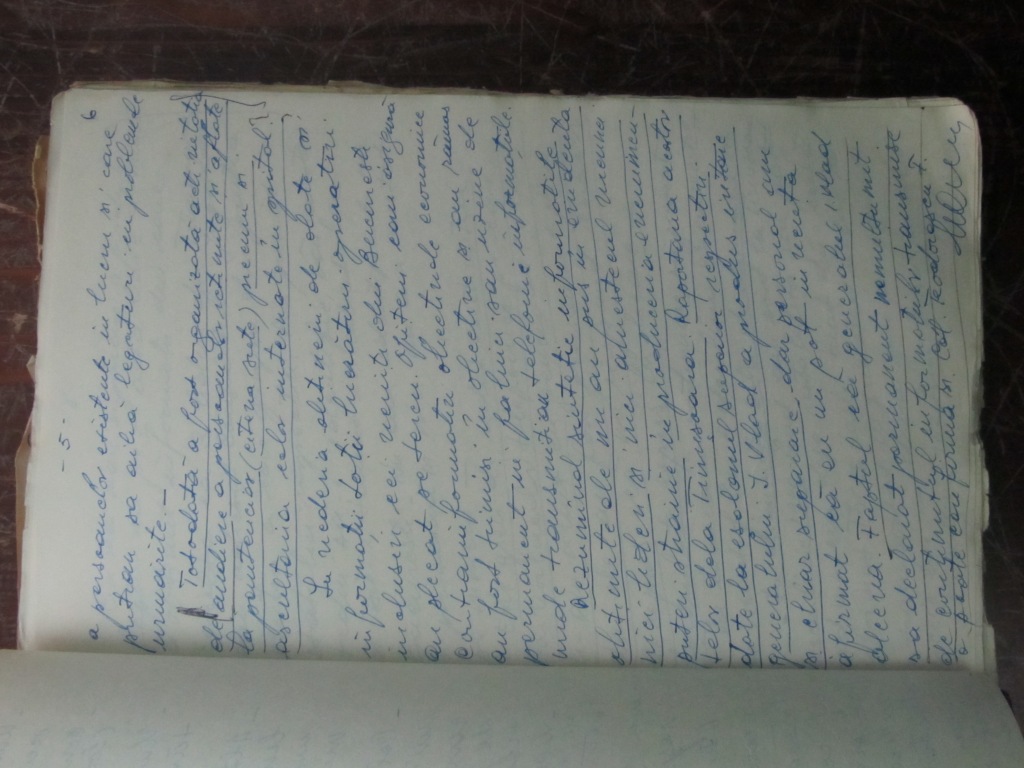
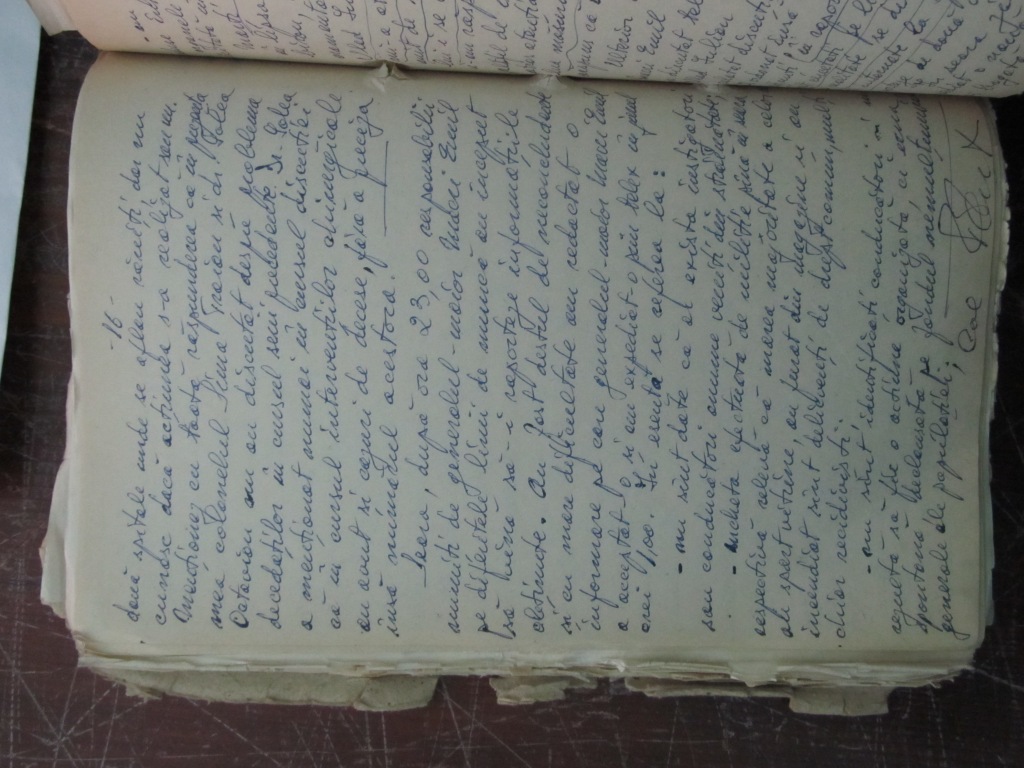













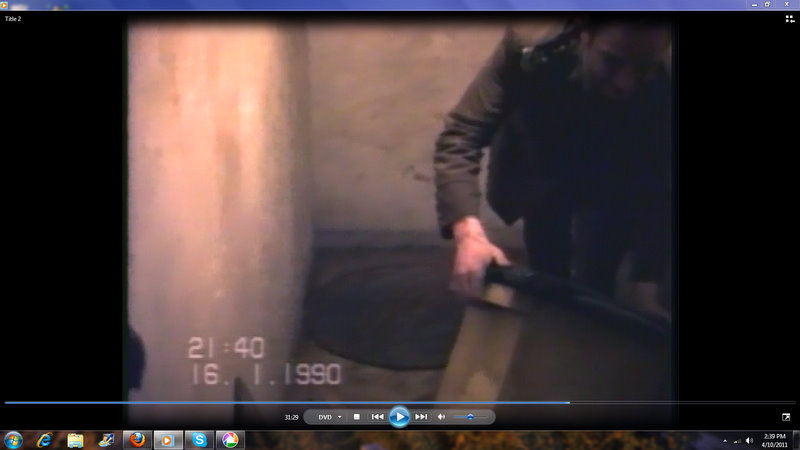

Cristian Troncotă, Alex Mihai Stoenescu, Filip Teodorescu (Grigore Cartianu)
http://adevarul.ro/cultura/istorie/adevarul-live-ora1300-cine-a-tras-22-grigore-cartianu-1_52b023b6c7b855ff56c613cf/index.html
http://adevarul.ro/cultura/istorie/cine-fost-teroristiii-cine-a-tras-22-grigore-cartianu-8_52b02b7ec7b855ff56c64a04/index.html
Grigore Cartianu moderează o nouă emisiune Adevărul Live despre evenimentele sângeroase din decembrie 1989. Dezbaterea îşi propune să ofere răspunsuri convingătoare unor întrebări dureroase: Cine au fost „teroriştii“? Cine-a tras în noi după 22? De ce au fost lichidaţi soţii Ceauşescu în ziua de Crăciun? În studioul Adevărul Live se află trei invitaţi de mare greutate: istoricii Cristian Troncotă şi Alex Mihai Stoenescu, precum şi Filip Teodorescu, unul dintre „aşii“ contraspionajului din decembrie 1989.Troncotă is the editor-in-chief of Revista Vitralii –Lumini si Umbre, a mouthpiece for former Securitate officers, http://www.acmrr-sri.ro/categorii/19/revista-vitralii–lumini-si-umbre.html
Alex Mihai Stoenescu has been publicly identified as former Securitate collaborator and is known for research and publications exonerating the former Securitate
Filip Teodorescu is a former Securitate officer
Cartianu has been promoted for his writings on December 1989 by the following: Joi, 16 decembrie, 11.30h dezbatere publica la IICCMER: Armand Gosu, Raluca Grosescu, Grigore Cartianu, Mihail Neamtu
http://tismaneanu.wordpress.com/2010/07/21/deshumarea-lui-ceausescu-un-pas-spre-adevar/
http://www.movingimagesource.us/articles/how-was-ceausescu-possible-20110929